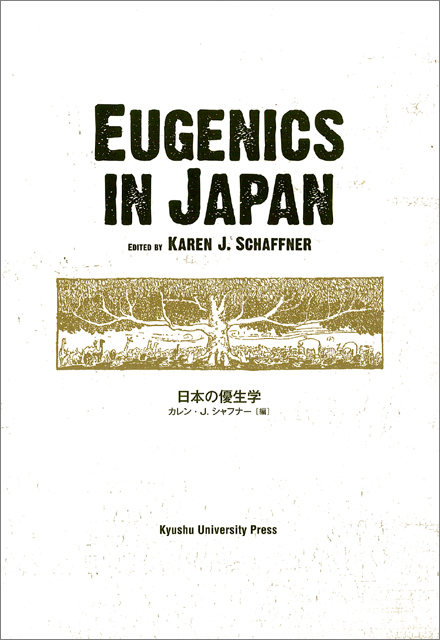- HOME >
- BOOKLIST >
- Humanities>
- A Grammar of Irabu
A Grammar of Irabu A Southern Ryukyuan Language
Introduction
Contents
Preface
Chapter 1 The Irabu language and its speakers
1.1. Geography
1.2. Genealogy
1.3. Notes on the settlement and political history of the Rykuku Islands
1.4. Sociolinguistic overview
1.4.1. The name of the language
1.4.2. Dialects
1.4.3. The number of speakers
1.5. Previous works on Irabu
1.5.1. Detailed grammars
1.5.2. Grammatical sketches
1.5.3. Works on specifi c topics
1.5.3.1. Phonological studies
1.5.3.2. Morphosyntactic studies
1.5.4. Dictionaries, texts, and unpublished materials
1.6. A typological overview of Irabu
1.6.1. Phonology
1.6.2. Morphosyntax
1.7. Method and data
1.8. Organisation of this grammar
Chapter 2 Phonology
2.1. Segmentation
2.1.1. Grammatical word
2.1.2. Phonological word
2.2. Classes of phonemes
2.2.1. Consonants
2.2.2. Glides
2.2.3. Vowels
2.3. Minimal or quasi-minimal contrasts
2.3.1. Consonants (stops, fricatives, and resonants)
2.3.2. Glides
2.3.3. Vowels
2.4. The structure of the root word
2.4.1. Word template
2.4.2. Nucleic resonants
2.4.3. Heavy structures
2.4.4. Examples of root word structures
2.4.4.1. Examples of words with an initial syllable only
2.4.4.2. Examples of words with an initial and a non-initial syllable, showing the structure of the initial syllable
2.4.4.3. Examples of words with an initial and a non-initial syllable, showing the structure of the non-initial syllable
2.4.4.4. Examples of words with a presyllable plus initial syllable
2.4.4.5. Examples of words consisting only of a presyllable (a syllabic resonant)
2.5. Phonotactics of the word-plus
2.5.1. Four primary phonotactic constraints of the word(-plus)
2.5.1.1. Final C
2.5.1.2. Medial cluster
2.5.1.3. Cluster of non-resonants
2.5.1.4. Ban on /C.V/ sequence
2.5.2. Long vowels and diphthongs
2.5.3. Single onset of initial and non-initial syllables
2.5.4. Initial syllable onset cluster
2.5.5. Non-initial cluster
2.5.5.1. Geminates
2.5.5.2. Partial geminates (homorganic /n/ + C of any place of articulation)
2.5.5.3. Non-geminates (resonant Ci + resonant/non-resonant Cj)
2.5.6. Presyllable plus initial syllable onset
2.5.6.1. Geminates
2.5.6.2. Partial geminates (homorganic /n(n)/ + C of any place of articulation)
2.5.6.3. Non-geminates
2.5.7. Frequecy-based account of root structures
2.5.8. Consonant allophony
2.6. Mora
2.6.1. Defi nition
2.6.2. Minimal word
2.6.3. Length (quantity) contrast
2.6.3.1. Short vs. long
2.6.3.2. Non-geminate vs. geminate
2.7. Phonological alternation rules
2.7.1. Sequential voicing
2.7.2. Geminate copy insertion rule
2.7.3. The /ї/-insertion rule
2.7.4. The /ï/-spreading rule
2.7.5. Resonant geminate reduction
2.7.6. Sequential nasal deletion
2.7.7. Morpheme-specifi c alternation rules
2.7.7.1. /j/-insertion for topic and accusative particles
2.7.7.2. /s/-to-/r/ assimilation
2.8. Miscellaneous segmental issues
2.8.1. Homorganic nasal clusters in roots
2.8.2. Non-nasal alveolar resonants /v/ and /ž/
2.8.3. The status of glides
2.8.3.1. General remarks
2.8.3.2. Advantages in assuming a complex CG
2.8.4. The phonemic analysis of long vowels
2.8.5. The problem of the long /ï ï/
2.9. Prosody
2.9.1. Prosodic patterns of root words
2.9.1.1. Prosodic patterns of W2
2.9.1.2. Prosodic patterns of W3
2.9.1.3. Prosodic patterns of W4 and longer words
2.9.1.4. Summary
2.9.2. Footing
2.9.2.1. Defi nition of the foot
2.9.2.2. Ternary footing
2.9.3. Tone assignment
2.9.3.1. The Principle of Rhythmic Alternation
2.9.3.2. The rule
2.9.3.3. Summary
2.9.4. Phrasal mapping of the alternating rhythm
2.10. Phonological characteristics of compounds
2.10.1. Productive compounds
2.10.2. Lexicalised compounds
Chapter 3 Descriptive preliminaries
3.1. Phrase structure
3.1.1. Predicate phrase
3.1.1.1. Verbal predicate
3.1.1.2 Nominal predicate
3.1.2. Nominal phrase
3.2. Word, affi x and clitic
3.2.1. Morphological dependency
3.2.1.1. Isolatability test
3.2.1.2. Reordering test
3.2.1.3. Combinability test
3.2.2. Phonological dependency
3.2.2.1. Overview
3.2.2.2. External clitics
3.2.3. Problematic cases
3.2.3.1. Auxuliary verb
3.2.3.2. Clitics of the bound-word type
3.2.3.3. Clitics with a limited combinability with a phonological host
3.3. Word classes
3.3.1. Nominals
3.3.2. Adnominals
3.3.3. Verbs
3.3.4. Adjectives
3.3.5. Bound markers
3.3.5.1. Argument markers
3.3.5.2. Predicate markers
3.3.5.3. Discourse markers
3.3.5.4. Relative ordering within bound marker chains
3.3.6. Others
3.3.6.1. Underived adverbs
3.3.6.2. Derived adverbs
3.3.6.3. Conjunctions
3.3.6.4. Interjections
3.4. Grammatical relations
3.4.1. Subject
3.4.2. Direct object
3.4.3. Indirect object
3.5. Argument structure
3.5.1. Core, extended core, and peripheral arguments
3.5.2. Core arguments
3.5.3. Extended core arguments
3.5.3.1. The verb ‘become’
3.5.3.2. The verb ‘get hit by’
3.5.3.3. The verb ‘meet’
3.5.3.4. Indirect object
3.5.4. Peripheral arguments
3.6. Morphological typology
3.6.1. Affi xation
3.6.2. Compounding
3.6.2.1. Structure
3.6.2.2. The word (as opposed to phrasal) status of the compound
3.6.3. Full reduplication
Chapter 4 The nominal phrase
4.1. The modifi er
4.1.1. Modifi er fi lled by NP
4.1.2. Modifi er fi lled by adnominal
4.1.3. Modifi er fi lled by other syntactic constructions
4.1.4. The semantic characteristic of genitive
4.2. The head
4.2.1. Formal nouns
4.2.1.1. tukja ‘time’
4.2.1.2. mai ‘front; before’
4.2.1.3. atu ‘back; after’
4.2.1.4. kutu ‘thing; fact’
4.2.1.5. tami ‘purpose; benefi t’
4.2.1.6. jau ‘state’
4.2.1.7. njaa ‘manner’
4.2.1.8. su(u)
4.2.2. Headless structure
4.2.3. Appositional structure
4.3. Case
4.3.1. Basic system
4.3.2. Nominative and genitive
4.3.3. Accusative and partitive
4.3.3.1. The distributional properties of Partitive =a
4.3.3.2. Specifi city and partitive
4.3.3.3. Partitive in contexts other than narrative converbal clauses
4.3.3.4. Partitive in narrative convernal clauses
4.3.3.5. The function of partitive: a cross-linguistic perspective
4.3.3.6. The two principles for partitive marking
4.3.3.7. Revisiting specifi city
4.3.3.8. Allomorphy of partitive
4.3.3.9. Accusative
4.3.4. Dative and allative
4.3.4.1. Time
4.3.4.2. Possessor
4.3.4.3. Experiencer
4.3.4.4. Passive agent
4.3.4.5. Result of change
4.3.4.6. Location
4.3.4.7. Causee agent
4.3.4.8. Benefi ciary
4.3.4.9. Goal-Location and Goal
4.3.4.10. Object of communication
4.3.5. Instrumental =sii
4.3.6. Associative =tu
4.3.7. Comparative =jarruu
4.3.8. Ablative =kara
4.3.9. Limitative =gami
4.3.10. Absence of case marking
4.3.10.1. Subject case marking and information structure
4.3.10.2. Object case marking and information-structure
4.3.10.3. Case ellipsis
Chapter 5 Morphology of nominals and adnominals
5.1. Nominals and adnominals: overview
5.1.1. The distribution in terms of NP structure
5.1.2. Demonstratives
5.2. Subclassifi cation of nominal
5.2.1. Nouns
5.2.2. Pronouns
5.2.2.1. Personal pronouns and demonstrative pronouns
5.2.2.2. Reformulating personal pronominal system: minimal-augment system
5.2.2.3. Refl exive pronouns
5.2.3. Numerals
5.2.4. Interrogatives
5.2.4.1. Basic forms
5.2.4.2. Complex form: ‘how’
5.2.4.3. Complex form: ‘why/how’
5.2.5. Indefi nites
5.2.6. Non-pronominal demonstrative nominal
5.2.6.1. Demonstrative locatives
5.2.6.2. Demonstrative manner words
5.3. The internal structure of the nominal word
5.3.1. Diminutive -gama
5.3.2. Plural –mi/-ta, etc.
5.3.3. Approximative -nagi
5.4. Adnominals
5.4.1. Demonstrative adnominals
5.4.2. Other adnominals
Chapter 6 Verb morphology
6.1. Functional overview
6.1.1. Verb infl ection and fi niteness
6.1.2. Tense, mood, negation, voice, and aspect
6.1.2.1. Tense, mood-modality, and negation
6.1.2.2. Voice
6.1.2.3. Aspect
6.1.3. Infl ection and clause combining
6.2. The structure of the verb word
6.2.1. Stem class
6.2.2. Thematic vowel (stem extension)
6.2.3. Some notes on the thematic vowel analysis
6.3. Infl ectional morphology
6.3.1. Finite infl ection
6.3.2. Non-fi nite infl ection
6.3.2.1. Narrative converbs
6.3.2.2. Other converbs
6.3.3. Internal structure of infl ectional endings
6.3.3.1. Finite realis infl ection as -(NEG)-TENSE-MOOD
6.3.3.2. Finite infl ection as -TENSE-MOOD[NEG]
6.3.4. Morphophonemics of Class 2 athematic stems
6.3.4.1. Stem-fi nal stop lenition
6.3.4.2. Class 2 stems ending in fricative and resonant
6.3.4.3. Class 2 stems that end in /v/
6.3.4.4. Class 2 stems with -u thematic vowel
6.3.4.5. Morphophonemic nominalization
6.3.5. Irregular verbs
6.3.5.1. Deictic directional verb ‘come’
6.3.5.2. Light verb (a)s- ‘do’
6.3.5.3. Negative verb njaa- ‘not exist’
6.3.6. Existential verb, state verb, and copula verb
6.3.6.1. Existential verb
6.3.6.2. Copula verb
6.3.6.3. State verb
6.4. Derivational morphology
6.4.1. Derivational affi xes
6.4.1.1. Causative -sїmi, -as
6.4.1.2. Passive-malefactive-potential -(r)ai
6.4.1.3. Honorifi c -(s)ama(r)
6.4.2. Primary stem
6.4.2.1. Compounds
6.4.2.2. Serial verb construction (SVC)
6.4.2.3. Auxiliary verb construction
6.5. Citation form
Chapter 7 The predicate phrase
7.1. The structure of verbal predicate phrase
7.1.1. Verb infl ection within a VP
7.1.2. Lexical verb and auxiliary verb
7.1.3. Phrasal serial verb constructions
7.1.3.1. Defi nition
7.1.3.2. Typological characteristics of phrasal SVCs
7.1.4. Phrasal auxiliary verb constructions
7.1.4.1. Aspectual AVCs
7.1.4.2. Benefactive AVCs
7.1.4.3. Auxiliary ellipsis
7.2. The structure of nominal predicate phrase
7.2.1. Basic structure
7.2.2. Secondary infl ection
Chapter 8 Property concepts, adjectives, and other derivational precesses
8.1. Property concept stems (PC stems)
8.1.1. Property concept
8.1.2. Morphosyntax of the PC stem
8.1.2.1. Prototypical PC stems: (a-f)
8.1.2.2. Less prototypical PC stems: (g-j)
8.1.2.3. Less prototypical nominal stems: (k-m)
8.1.3. Non-class-changing derivation by -gi ‘seem; appear’
8.2. The adjective class
8.2.1. Overview
8.2.1.1. Morphology
8.2.1.2. Semantics
8.2.1.3. Syntax
8.2.2. Adjectives in NP structure
8.2.2.1. Highly restricted argument function
8.2.2.2. Skewed functional preference for the modifi er NP function
8.2.2.3. Modifi cational constraint
8.2.3. Adjectives in VP structure
8.2.4. Adjectives derived from nominal stems
8.2.5. Summary
8.3. Deriving nominals, verbs, and adverbs
8.3.1. State nominal derivation with -sa
8.3.2. PC adverb with -fї
8.3.3. PC verb with -ka(r)
8.3.3.1. Diachronic account of -ka(r)
8.3.3.2. The PC verb as a subclass of verb
8.3.4. Compound nominals derived from PC stems
8.3.4.1. Overview
8.3.4.2. Lexical head compounds
8.3.4.3. Dummy head compounds
8.4. Adjective, compound nominal, and PC verb: functional account
8.4.1. Dummy head compound vs PC verb: predicative function
8.4.2. Adjective vs lexical head compound: attributive function
8.4.3. Adnominal clause vs adjective: syntactic attributivefunction
8.5. Class-changing derivation
8.5.1. Noun-to-verb derivation (verbalisation)
8.5.2. Verb-to-noun derivation (nominalisation)
8.5.3. Verb-to-PC-stem derivation
8.5.3.1. ’wanting to’ -busї
8.5.3.2. ’diffi cult to’ -guri
8.5.3.3. ’easy to’ -jasї
Chapter 9 Bound markers
9.1. Overview of bound markers
9.2. Conjunction markers
9.2.1. Temporal =kja(a)
9.2.2. ’So’ conjunction =(ss)iba
9.2.3. ’But’ conjunction =suga
9.3. Modal markers
9.3.1. Dubitative =bjaam
9.3.2. Dubitative 2 =gagara
9.3.3. Hearsay =ca and =tim(dara/dooi)
9.3.4. Uncertainty =pazї
9.3.5. Addressive assertive =su(u)da
9.3.6. Certainty =dara
9.3.7. Emphatic =doo(i)
9.3.8. Reserved emphatic =saa
9.4. Limiter markers
9.4.1. ’Too’ quantifi er =mai
9.4.2. ’Only’ quantifi er =tjaaki
9.4.3. ’Only’ quantifi er 2: =bakaar
9.4.4. ’Nothing’ quantifi er =cumma
9.4.5. ’Primarily’ qualifi er =kara
9.4.6. Emphatic qualifi er =dumma
9.4.7. Contrastive =gami
9.5. Information-structure markers
9.5.1. Topic markers
9.5.1.1. Object topic =ba(a)
9.5.1.2. Non-object topic =a
9.5.2. Focus markers
9.5.2.1. Declarative focus =du
9.5.2.2. Interrogative focus =ru and =ga
9.6. Discourse markers
9.6.1. Information-updater =ju(u)
9.6.2. ’How about’ =da
9.6.3. Confi rmative =i
9.6.4. Emotional =ra(a), =sja(a)
9.6.5. Question =ru/=ga
9.6.6. Question 2 =e(e)
Chapter 10 The simple sentence
10.1. Speech acts and clause types
10.1.1. Declarative clauses
10.1.2. Interrogative clauses
10.1.3. Imperative clauses
10.1.4. Mismatches or ambiguous cases
10.1.4.1. Polite command
10.1.4.2. Rhetorical question
10.1.4.3. Self question and clause types
10.2. Proper inclusion, equation, state, location, and possession
10.2.1. Proper inclusion
10.2.2. Equation
10.2.3. State
10.2.4. Location
10.2.5. Possession
10.3. Negation
10.3.1. Infl ectional negation
10.3.2. Negation of existential and state verbs
10.3.3. Negation of PC verb
10.4. Valency changing
10.4.1. Causative
10.4.1.1. Morphological causative
10.4.1.2. Lexical intransitive-transitive pairs
10.4.1.3. Anticausative
10.4.2. Passive
10.4.3. Malefactive
10.4.4. Refl exive
10.5. Tense, mood, and aspect
10.5.1. Tense and mood
10.5.1.1. Realis mood
10.5.1.2. Irrealis mood
10.5.1.3. The verb form unmarked for mood
10.5.1.4. Relative tense
10.5.2. Aspect
10.5.2.1. Progressive
10.5.2.2. Resultative
10.5.2.3. Prospective
10.5.2.4. Perfect
10.5.2.5. Experiential
10.5.2.6. Habitual and iterative
Chapter 11 The complex sentence
11.1. Overview of complex clause structures
11.2. Coordination
11.2.1. Symmetrical coordination
11.2.2. Asymmetrical coordination
11.3. Clause chaining
11.4. Subordination
11.4.1. Adsentential subordination
11.4.1.1. Temporal clauses with =kja ‘when/while’
11.4.1.2. Conditional clause
11.4.1.3. Causal clause with converb ‘because; if/when’
11.4.1.4. Continuous clause -gakaazї ‘whenever’
11.4.1.5. Immediate anterior clause with -tuu ‘as soon as’
11.4.1.6. Aversive clause with -zїm ‘lest’
11.4.2. Adverbial subordination
11.4.2.1. Simultaneous clause with -ccjaaki ‘while’
11.4.2.2. Purpose clause with -ga ‘(go) in order to’
11.4.3. Adnominal subordination
11.4.3.1. Overview
11.4.3.2. The NP that can be relativised
11.4.3.3. Relativisation of an NP from a complement clause
11.4.3.4. Relativisation of an NP from an adjunct clause
11.4.3.5. Relativisation of an NP from other kinds of complex clause
11.4.3.6. Simple attribution
11.4.4. Complementation
11.4.4.1. Quotative complement
11.4.4.2. Adnominal clause structure functioning like a complement
11.5. Focus construction (kakarimusubi)
11.5.1. A brief note on kakarimusubi
11.5.2. Focus marking
11.5.2.1. Sentence-Focus
11.5.2.2. Argument Focus
11.5.2.3. Predicate Focus
11.5.2.4. WH Focus
11.5.2.5. Contrastive Focus
11.6. Degree of dependency: Coordination, clause chaining, adsentential and adverbial subordination
11.6.1. Focus marking
11.6.2. Restricted clause-internal topic marking
11.6.3. Main clause illocutionary scope
11.6.3.1. The scope of negation
11.6.3.2 The scope of interrogation
11.6.4. Restrictions on relativisation
Appendix
Bibliography
Subject Index, Language Index


